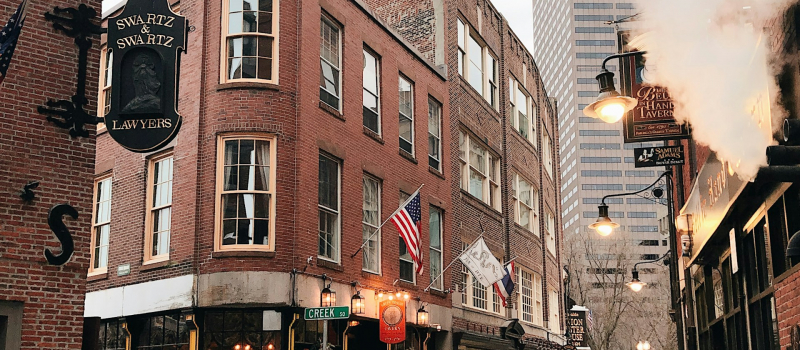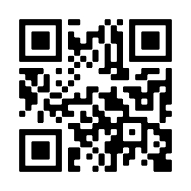Northeastern Dialects: The Voice of America’s Historical Heart
When you think of Northeastern dialects, you probably picture the strong Boston accent, the distinctive sounds of New York, or the rapid speech of New Jersey. These accents carry the weight of history, reflecting the region’s colonial roots and immigrant influences.
While they may sound sharp to outsiders, Northeastern dialects are full of character and energy, making them one of the most well-known varieties of American English. In this post, we’ll explore the unique pronunciation, vocabulary, and cultural significance of the dialects spoken in the Northeast United States as a part of our series exploring regional U.S. dialects.
Historical Roots
The Northeastern United States, encompassing states like New York, Massachusetts, Maine, Pennsylvania, and Rhode Island, boasts some of the most distinct and storied dialects in American English. These dialects reflect the region’s colonial history, diverse immigrant populations, and cultural vibrancy. From the sharp tones of Boston to the rapid rhythm of New York City, Northeastern dialects are as varied as the people who speak them.
Defining Features of Northeastern Dialects
Pronunciation
- Non-rhotic speech: In Boston and parts of New England, the “R” is often dropped, turning “car” into “cah”and “park” into “pahk.”
- Distinct vowel shifts: In New York, words like “coffee” are pronounced “caw-fee.”
- Fast-paced speech: Particularly in cities like New York, the rhythm of speech is quick and energetic.
Grammar
Tends to follow standard American English grammar, though sentence structures might be shortened in casual speech (e.g., “You going?” instead of “Are you going?”).
Vocabulary
A mix of older English terms, immigrant-influenced words, and local slang. Examples include:
- “Wicked” – Used for emphasis in New England (e.g., “wicked good”).
- “Bubbler” – Refers to a water fountain, common in parts of New England.
- “Hero” or “Hoagie” – Terms for a sub sandwich, used in New York and Pennsylvania respectively.
Regional Variations in Northeastern Dialects
Boston Accent
- Non-rhotic speech and a distinct elongation of vowels.
- Famous phrases:
- “Pahk the cah in Hahvahd Yahd” – A playful example of Boston’s dropped “R.”
- “Dunks” – Refers to Dunkin’ Donuts, a regional favorite.
New York City Accent
- Strong “aw” sound in words like “talk” (“tawk”) and “water” (“waw-ter”).
- Popular phrases:
- “Fuhgeddaboudit” – A humorous way of saying “forget about it.”
- “Schlep” – To carry or drag something, borrowed from Yiddish.
- “On line” – New Yorkers say “on line” instead of “in line.”
Philadelphia Accent
- Unique pronunciation of “o” sounds, making “home” sound like “hoam.”
- Known for local terms like:
- “Jawn” – A versatile word that can mean anything (e.g., “Pass me that jawn”).
- “Wooder” – Pronunciation of “water.”
Northern New England (Maine, Vermont, New Hampshire)
- Strong rural influence with words like “ayuh” (yes) and phrases like “You can’t get there from here.”
- Heavy emphasis on practicality and brevity in speech.

Common Northeastern Phrases and Their Meanings
- “Wicked good” – Extremely good (New England).
- “The T” – Refers to Boston’s subway system.
- “Yo, you good?” – A common way of checking in with someone (New York and Philadelphia).
- “Outta here” – A quick way to say someone is leaving or has left (New York).
- “Ayuh” – A Maine expression meaning “yes” or “indeed.”
- “Outen the lights” – A Pennsylvania Dutch expression for “turn off the lights”.
- “Rutch” – Another word for fidget commonly used in Pennsylvania.
Cultural Significance of Northeastern Dialects
The Northeastern United States is rich in linguistic diversity, with distinct dialects that not only reflect historical migration patterns but also serve as cultural markers of identity. The Northeastern dialects reflect the region’s rich history as one of the first areas settled by Europeans.
They also highlight the cultural contributions of immigrant communities, including Irish, Italian, Jewish, and Eastern European populations. These accents and dialects have become iconic in American media, often symbolizing toughness, resilience, and wit.
A Window Into Regional Identity
Dialects in the Northeast are deeply tied to local identity and heritage. For example:
- Boston English (e.g., dropping the “R” in words like car → cah) is closely associated with working-class pride and historical ties to Irish and Italian immigrants.
- New York English (e.g., the distinctive “aw” sound in coffee → cawfee) is emblematic of the city’s melting pot culture, shaped by waves of immigration from Europe and beyond.
- Philadelphia and Baltimore accents (e.g., water pronounced as wooder) reflect the Mid-Atlantic’s mix of Southern and Northern linguistic influences, showing how the region straddles different speech traditions.
Influence on Media & Pop Culture
Northeastern dialects have had a massive impact on American media, entertainment, and humor:
- Boston’s accent has been immortalized in movies like Good Will Hunting and The Departed, reinforcing its association with loyalty, toughness, and blue-collar roots.
- The fast-talking, sharp-edged New York accent is a staple of television and film, often used to depict street-smart, ambitious, or comedic characters (think Seinfeld, The Sopranos, or Saturday Night Live).
- Philadelphia’s unique dialect features prominently in Rocky, further cementing the city’s reputation for resilience and grit.
Linguistic Prestige & Perception
While some accents are celebrated, others have been historically stigmatized or mocked, shaping social dynamics. For example:
- The New York accent was once seen as brash or unrefined, leading some speakers to alter their speech for professional settings.
- Certain Northeastern accents have been perceived as intellectual or elite, particularly in New England. This is due to the region’s association with prestigious universities like Harvard, Yale, and MIT, where a more formal, “clipped” way of speaking developed among upper-class circles. This version of a Northeastern accent is sometimes called the Transatlantic accent, which was cultivated in elite schools and old Hollywood films.
A Living Language
Despite influences from technology, globalization, and social mobility, Northeastern dialects persist, particularly in local neighborhoods, older generations, and cultural traditions. They remain an integral part of how people in the region express their identity, connect with their roots, and distinguish themselves from outsiders.
Improve Your English Fluency with Excel English Institute’s ESL Programs
The Northeastern dialect is a living reminder of America’s linguistic diversity and historical influences. Whether you want to understand native speakers better or simply appreciate the distinct accents of Boston, New York, and beyond, exploring regional dialects can enrich your English learning experience.
At Excel English Institute, we help students develop strong listening and speaking skills to navigate different accents with ease. Ready to improve your English? Start learning with us today!
Excel English Institute’s U.S. Dialects Guide for ESL Learners
Below is a list of the dialects we will be exploring in this series. Links will be added as they are published, so check back for updates!
- Discovering U.S. Dialects: A Guide for ESL Learners
- Midwestern Dialect: The Heart of Neutral American English
- Southern Dialects: The Warm & Melodic Voices of The South
- Northeastern Dialects: The Voice of America’s Historical Heart
- Western Dialects: The Language of The Open Frontier
- Southwestern Dialects: A Blend of Cultures & Languages
- Appalachian Dialect: Preserving The Language of The Mountains
- Hawaiian Pidgin: The Unique Voice of The Aloha State
- African American Vernacular English (AAVE): A Rich & Influential Dialect














